What it's like to attend Microsoft's Mixed Reality Academy
Everything about Microsoft's Mixed Reality Academy is great, and there needs to be a lot more of it.
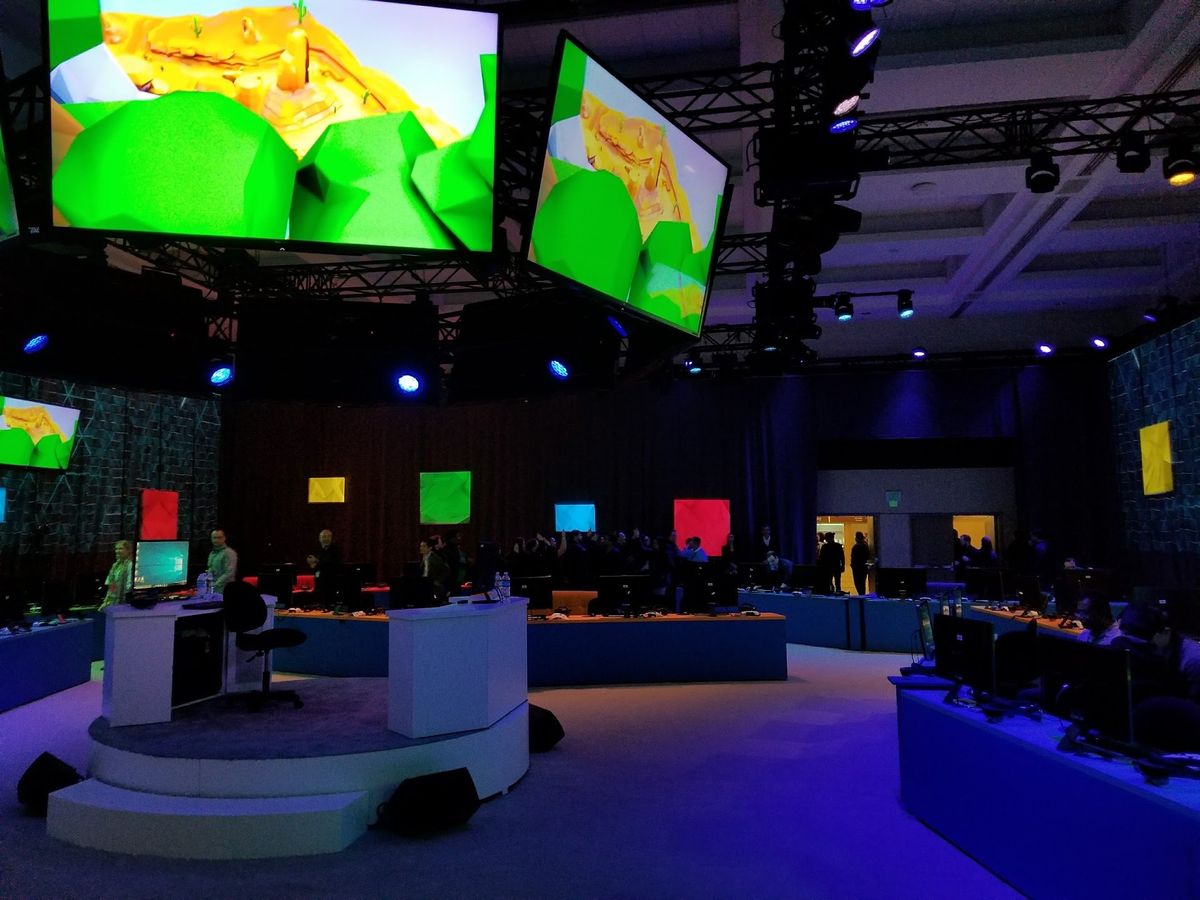
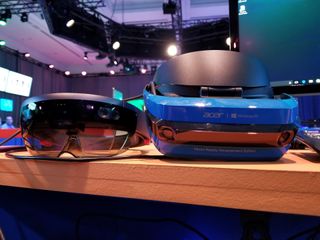
With all of the excitement surrounding the hardware driving Windows Mixed Reality, it's easy to forget about how important the software is. Like any other big platform today, third-party developers contributing new and interesting ideas are the difference between stagnation and explosive growth. In a world full of people still thinking about Virtual Reality (VR) versus Augmented Reality (AR), Microsoft faces a unique challenge when trying to encourage thinking about VR with AR.
One very important way Microsoft is addressing this issue is through its Mixed Reality Academy. Microsoft introduced some members of the press at Build to an abbreviated version of the educational setup. Here's how it works!



Insider's view of Windows Mixed Reality Academy
Everyone that signs up for Mixed Reality Academy gets a badge, a locker to store personal items, and a seat in front of a Kinect with a huge LED panel behind it. The Kinect is paired with a Surface tablet and is there to measure your "interpupillary distance" (IPD). This quick measurement is to ensure you don't have to go through any additional hardware setup with the hardware at your workstation. It's a clever use of a Kinect, and just as accurate as any IPD test I've used at my optometrist.
Once you have everything you need, it's time to head to your workstation.
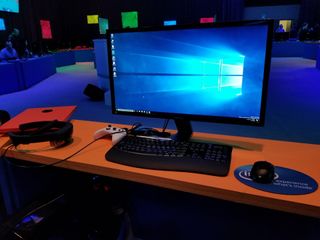
The room we were ushered into was separated into a series of brightly colored workstations. The four-person team I was assigned was seated at a set of orange workstations, with red, blue and green workstations scattered throughout the room. Each workstation had an impressively large monitor, a HoloLens, and an Acer Mixed Reality Developer Unit. Once everyone was seated, we were invited to put HoloLens on so the show could begin.
What really made the experience worthwhile was the energy in the room.
Microsoft Technical Fellow Alex Kipman, who we'd all seen on stage at Build only a few hours ago, was now floating towards me as a hologram. He was virtually there to tell everyone about Microsoft's mission and how developers of every skill level could be a part of that mission. When Holo-Alex was finished, we were introduced to our mentors and our on-stage instructor. This version of the Academy was to be abbreviated, only a third of the time typically spent on the project, and not everyone there had development experience so the session was built to be dead-simple.
What really made the experience worthwhile was the energy in the room. Everyone involved was positive, excited, and very helpful. The major goals in the intro were explaining how to think about building things in Mixed Reality and the relatively small differences between building for HoloLens and immersive headsets. This explanation happened alongside a brief walkthrough of Microsoft's Holo-toolkit in Unity and the basic pieces that make up an experience in Mixed Reality. Once these basics were covered, it was time to start assembling the project.
Get the Windows Central Newsletter
All the latest news, reviews, and guides for Windows and Xbox diehards.
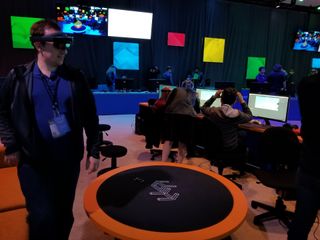
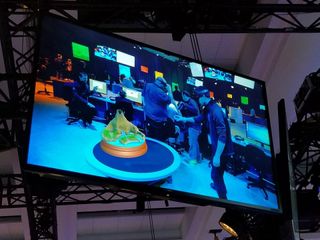
The reason we had two headsets to work with quickly became clear. This project was a game where HoloLens and immersive headsets worked together to solve puzzles. The HoloLens users could walk around in the real world and look down at a small virtual island sitting on a table behind our workstation. These users could look down at the island and see the immersive headset wearers, who were toy-like avatars on the island. The people wearing the immersive headsets sat at their workstations and used an Xbox One controller to explore the life-sized island around them. If we looked up, the HoloLens users looked like clouds in the sky and moved around with their heads.
As the avatars on the island got closer to the center, a door with a puzzle appeared. Reaching the door caused a hint to appear, which could only be seen by the HoloLens wearers. Those users shared the hint with the surface avatars, and you worked together to solve the puzzle. Once all three puzzles were solved, the rocket in the volcano at the center of the island took off, and regardless of the headset you were wearing, you could look up and enjoy the rocket blasting off.
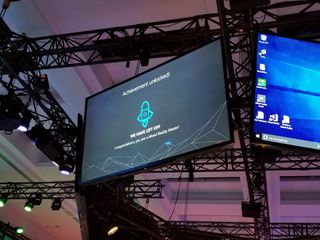
Mixed Reality Academy is truly exciting
This Mixed Reality Academy isn't designed to teach people how to code, which is good because you can't really learn that in three hours. Instead, it's meant to help everyone involved think about how to develop for Mixed Reality. TheAcademy establishes a lot of good behaviors, like how to use black space so it's transparent for HoloLens while still useful for immersive headsets. There are important lessons on making sure people in immersive headsets are comfortable with movement while making sure HoloLens users are able to take advantage of the ability to walk around.
Mixed Reality Academy is the kind of thing I wish everyone could experience.
Best of all, the lessons don't stop once you reach the end of your Academy session and receive your achievements. Mixed Reality Academy is an extension of the Holographic Academy Microsoft has been conducting for two years, which means there's a treasure trove of free online videos and tutorials to complement the in-person experience when you leave. Microsoft's Holo-toolkit is also a two-way street, open to feedback and changes from the community with support for new concepts when requested by those users.
Mixed Reality Academy is the kind of thing I wish everyone could experience, whether they're sold on Mixed Reality or not. It's a positive, encouraging environment with a fantastic complement of resources. There's no way you could sit in this environment and walk away not excited about Mixed Reality, and that energy is going to spread to everyone who uses things created by people involved in this program.
Russell is a tech nerd who chases the best of everything, from phones to game consoles to laptops and everything glowing or beeping. He's the Managing Editor of gaming content for Mobile Nations and can be found contributing to all of the Mobile Nations sites. Reach out on Twitter!